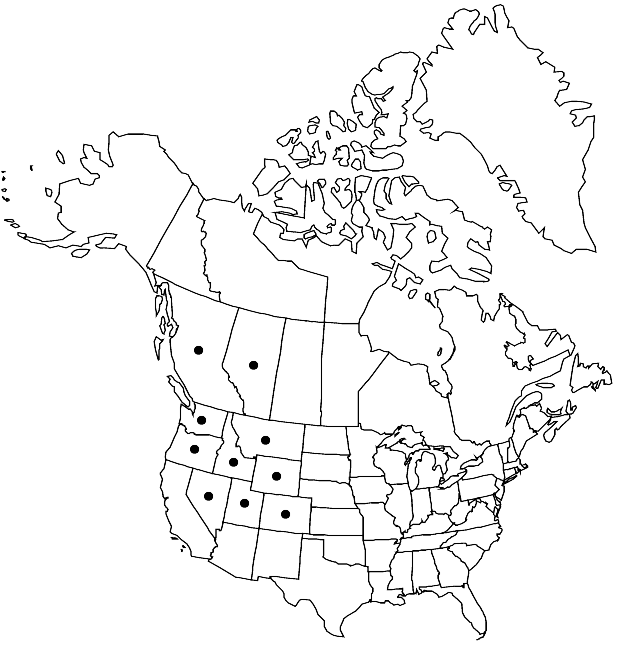Smelowskia americana
Bull. Torrey Bot. Club 29: 239. 1902.
Plants sometimes canescent basally; caudex branched. Stems: several from base, often unbranched, (0.4–)0.6–2(–2.7) dm, trichomes simple, 0.5–1.3 mm, mixed with smaller, dendritic ones. Basal leaves: petiole 1–5(–8) cm, ciliate, trichomes simple; blade oblanceolate to obovate, or ovate to oblong in outline, (terminal segments linear, oblong, or ovate), (0.5–)1–3.5(–5.2) cm × 4–17 mm, (terminal segments 0.2–1.4 cm × 0.5–4 mm), margins 1- or 2-pinnatifid or -pinnatisect, apex obtuse or subacute. Cauline leaves shortly petiolate or sessile; blade similar to basal, smaller distally. Racemes elongated in fruit. Fruiting pedicels suberect to ascending, (subappressed to rachis, often forming less than 40˚ angle), proximalmost bracteate, 4–10(–14) mm, pubescent, trichomes simple (to 1.5 mm), mixed with smaller, dendritic ones. Flowers: sepals 2–3.5 mm; petals usually white, rarely pinkish or lavender, suborbicular to obovate, 3.5–6.5 × 1.5–3.5mm, narrowed to claw, 1.5–3 mm, apex rounded; anthers oblong, 0.5–0.7 mm. Fruits usually suberect, rarely ascending, ellipsoid or oblong to linear, 4-angled, 5–13 × 1.5–2 mm, base and apex cuneate; valves each with prominent midvein; ovules 8–12(–14) per ovary; style 0.2–0.8 mm. Seeds 1.1–1.9 × 0.6–0.9 mm. 2n = 12, 22.
Phenology: Flowering Jun–Aug.
Habitat: Talus and scree slopes, rock crevices, tundra, alpine meadows, fellfields
Elevation: 2900-4000 m
Distribution

Alta., B.C., Colo., Idaho, Mont., Nev., Oreg., Utah, Wash., Wyo.
Discussion
Both R. C. Rollins (1993) and N. H. Holmgren (2005b) listed 2n = 44 for Smelowskia americana (as S. calycina var. americana), but no such number is known for any species of the genus (S. I. Warwick and I. A. Al-Shehbaz 2006). It is most likely that the first two authors erred in reporting 2n = 22 for the species. The latter count is likely to represent a dysploid reduction of tetraploid populations based on x = 6.
Previous North American authors (e.g., W. H. Drury Jr. and R. C. Rollins 1952; Rollins 1993; N. H. Holmgren 2005b) believed that the central Asian Smelowskia calycina and the North American plants also attributed to it are conspecific. S. I. Warwick et al. (2004b) clearly demonstrated that they are different species. The North American plants, S. americana, are easily distinguished from S. calycina by having readily caducous instead of persistent calyces. As recognized by Rollins (1993), the North American S. calycina represented three distinct taxa (S. americana, S. media, S. porsildii) none of which belongs to that species.
Selected References
None.